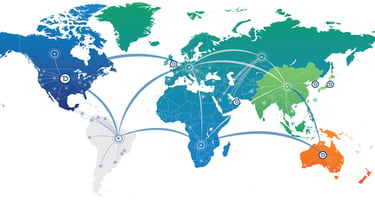What if your content delivery system is unknowingly stealing 30% of your performance and doubling...
The Role of AI in Optimizing Video CDN Architectures
In the rapidly evolving digital landscape of 2024, artificial intelligence (AI) and machine learning (ML) have become key drivers in optimizing video Content Delivery Network (CDN) architectures. These technologies are transforming the way video content is distributed across the internet, enhancing the performance, reliability, and efficiency of CDNs, which are vital for streaming high-quality video content to users worldwide.

The Evolution of Video CDNs
Content Delivery Networks have traditionally been the backbone of video streaming, ensuring content is delivered from servers close to the user to minimize latency and improve load times. With the surge in online video consumption, CDNs have expanded their infrastructure globally. However, the challenge has not just been about scaling up; it's about intelligently managing the traffic to ensure seamless delivery of content without delays or buffering, regardless of the viewer's location or device.
The Role of AI and ML in CDN Optimization
AI and ML are revolutionizing CDN technology by introducing smarter routing algorithms, predictive analytics, and automated decision-making processes. These advancements enable CDNs to dynamically adjust to changes in network traffic, predict and mitigate potential bottlenecks before they affect user experience, and efficiently manage resources to reduce costs while improving video streaming quality.
Smart Routing and Load Balancing
One of the fundamental ways AI enhances CDN performance is through intelligent routing. By analyzing vast amounts of data on network conditions, user demands, and content popularity, AI algorithms can make real-time decisions on the best path to deliver content to the end-user. This not only speeds up the delivery process but also ensures a higher quality of service by reducing latency and avoiding congestion in the network.
Predictive Analytics for Traffic Management
AI and ML enable CDNs to forecast traffic patterns and anticipate demand spikes, allowing for proactive allocation of resources. This predictive capability ensures that CDNs can handle sudden increases in viewership without compromising on the quality of streaming, which is particularly important for live events or premieres of highly anticipated content.
Quality of Experience (QoE) Enhancements
AI-driven CDNs can monitor streaming quality in real-time and make adjustments to preserve the viewer's quality of experience. For instance, by reducing the video bitrate during periods of high congestion, CDNs can prevent buffering and ensure continuous playback, albeit at a slightly lower quality. This adaptability is crucial for maintaining viewer satisfaction, especially in regions with varying internet speed.
Cost Reduction and Efficiency
Implementing AI in CDNs also leads to significant cost savings and operational efficiencies. By optimizing the distribution of content across the network, reducing the reliance on central servers, and minimizing data transfer costs, AI technologies can significantly lower the expenses associated with content delivery. Moreover, intelligent caching strategies ensure that popular content is stored closer to the user, reducing the need for repeated downloads from the origin server and thereby decreasing bandwidth costs.
Case Studies and Real-World Applications
The implementation of AI in CDN architectures is not just theoretical but has been successfully applied by major content providers and CDN services. For instance, Netflix has developed its own CDN system, OpenConnect, which uses sophisticated algorithms to intelligently cache and distribute content across its network, reducing buffering times and improving streaming quality for millions of users worldwide.
Similarly, companies like Medianova are leveraging AI and ML to enhance their CDN solutions, offering optimized and dedicated CDN services that ensure low-latency, high-quality video applications, benefiting both the service providers and their clients.
Conclusion
As we move further into 2024, the role of AI in optimizing video CDN architectures is becoming increasingly crucial. By harnessing the power of AI and ML, CDNs can not only meet the growing demand for high-quality video streaming but also anticipate and adapt to future challenges in the digital content delivery landscape. This evolution marks a significant step towards creating a more efficient, reliable, and user-centric internet, where high-quality video content is accessible to users around the globe, regardless of their location or device.


